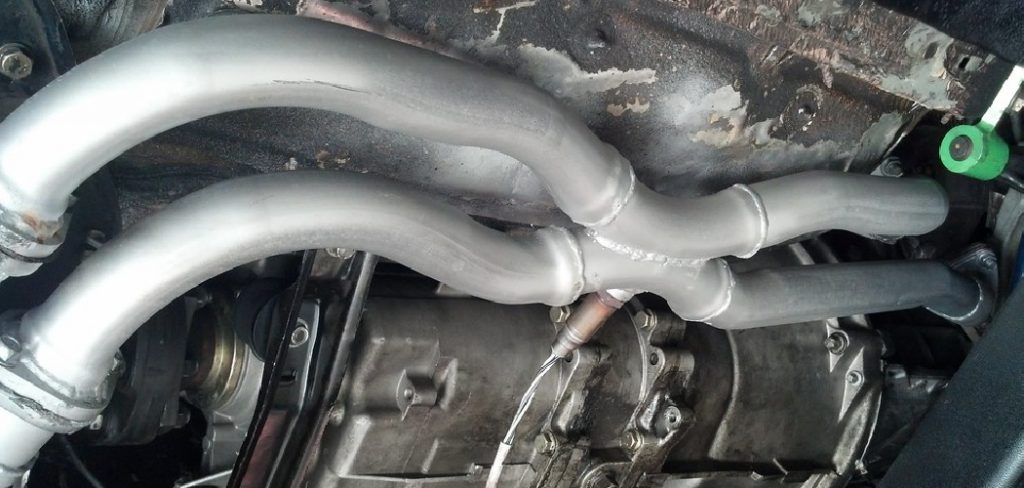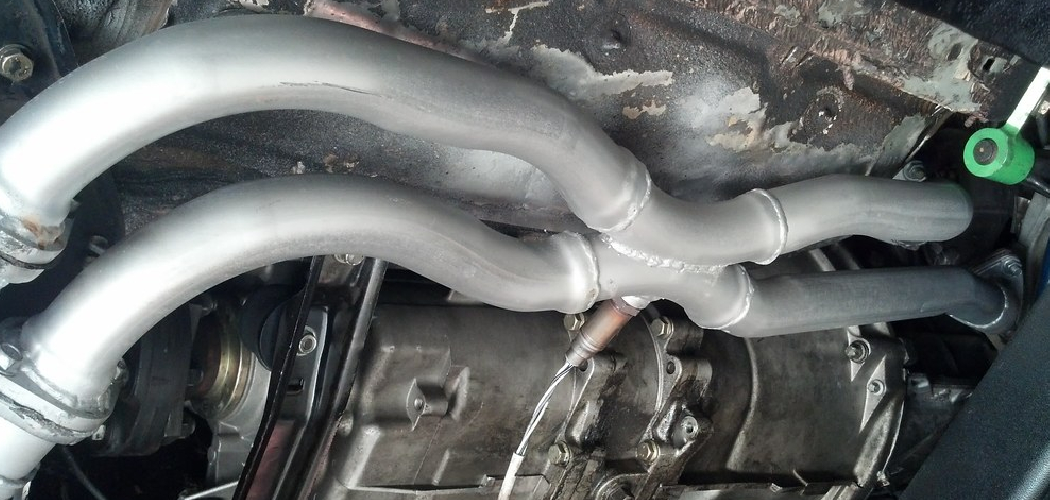Oxygen (O2) sensors play a crucial role in monitoring the air-fuel mixture in your vehicle’s exhaust system. However, there are scenarios where you might need to turn off the rear O2 sensors, such as when installing performance modifications or dealing with certain engine management systems. This guide will provide an overview of how to turn off rear o2 sensors. Keep in mind that tampering with emission control systems may be illegal in some regions, so ensure compliance with local regulations before proceeding.

Purpose of the Rear O2 Sensors
The rear O2 sensors, also known as downstream oxygen sensors, are located behind the catalytic converter in your vehicle’s exhaust system. Their primary function is to monitor the efficiency of the catalytic converter by measuring the oxygen levels in the exhaust gases after they pass through it. This feedback helps the engine control unit (ECU) ensure that the catalytic converter is operating properly to reduce harmful emissions. Unlike the upstream O2 sensors, which are responsible for optimizing the air-fuel mixture, the rear sensors focus on maintaining compliance with emission standards by detecting any potential malfunctions in the exhaust system.
Reasons to Disable Rear O2 Sensors
Disabling rear O2 sensors is typically considered in specific scenarios where their functionality is no longer required or poses challenges to certain modifications. One common reason is when upgrading to a high-performance exhaust system that removes or alters the catalytic converter, as the rear sensors may trigger error codes or check engine lights due to their inability to detect standard emissions levels.
Additionally, in off-road or racing applications, where vehicles do not operate under public road emission regulations, disabling these sensors can prevent unnecessary ECU adjustments or warnings. It’s important to note, however, that disabling rear O2 sensors may not comply with emission laws and can lead to increased environmental impact, making it essential to carefully evaluate the implications before proceeding.
10 Methods How to Turn off Rear O2 Sensors
1. Use an ECU Tuning Software or Programmer

One of the most effective and clean methods to disable rear O2 sensors is by using ECU tuning software. These programs, like HP Tuners, SCT, or EFI Live, allow users to access the car’s ECU and reprogram it to ignore or “delete” the signal from the rear sensors. After connecting your laptop or handheld device to the vehicle’s OBD-II port, you can adjust the fuel map and emissions parameters to turn off the post-cat oxygen sensors. This method ensures no physical tampering with the sensors, and when done right, doesn’t throw error codes. However, it does require some technical knowledge or assistance from a tuner shop.
2. Install an O2 Sensor Simulator (O2 Sim)
O2 simulators are devices designed to mimic the voltage signal that the rear O2 sensors would normally send to the ECU. These can be plugged into the wiring harness in place of the actual sensor or installed inline with the existing wiring. They effectively trick the ECU into thinking the catalytic converter is working properly, avoiding check engine lights. Simulators are popular for their plug-and-play nature and are ideal for people who want a reversible option. However, compatibility with newer ECUs can vary, so it’s essential to choose one matched to your specific make and model.
3. Use a Spark Plug Non-Fouler Trick
This mechanical hack involves installing spark plug non-foulers (available at most auto parts stores) between the rear O2 sensor and the exhaust bung. The idea is to move the sensor slightly out of the direct exhaust stream, so it reads fewer emissions, simulating the effect of a properly functioning catalytic converter. Usually, stacking two non-foulers together and drilling out the inner diameter of one can create the needed spacing. This method doesn’t electronically turn off the sensor but can prevent the ECU from detecting a fault, thereby keeping the check engine light off.
4. Reflash the ECU with Aftermarket Firmware
Another high-level method involves reflashing the ECU with a performance-oriented firmware file that is designed without rear O2 sensor logic. These reflashes are often available from tuning companies who develop specific software packages for modified vehicles.
Reflashing the ECU can permanently disable rear O2 monitoring, often along with other features like torque management and speed limiters. This method is more invasive than using a plug-in tuner, but it’s also more flexible in how much control it gives the user or tuner. It’s best done by professionals or advanced DIYers with experience in ECU mapping.

5. Wire in a Resistor to Mimic Sensor Values
This electrical method involves installing a fixed resistor in place of the O2 sensor to mimic the voltage or resistance the ECU expects. This requires knowing the correct values and wiring positions for your specific vehicle. The resistor essentially tells the ECU that everything is functioning as it should. This is a crude method and can be unreliable on modern vehicles with more complex diagnostics systems. Still, it’s a low-cost option that works on older or less sophisticated engine management systems.
6. Utilize a Performance ECU or Standalone Engine Management System
For track or off-road builds, replacing the factory ECU entirely with a standalone engine management system (EMS) such as AEM, Haltech, or Megasquirt allows full control over engine parameters, including O2 sensors. These systems are highly customizable and allow you to simply remove rear O2 sensors from the equation. While this is an expensive and complex option, it is ideal for high-performance or race-only applications. It also offers the advantage of complete tunability, helping optimize engine power and efficiency beyond what the factory ECU allows.
7. Disable O2 Sensor Diagnostics via ECU Parameters
Many factory ECUs have toggles or switch parameters for enabling or disabling onboard diagnostics (OBD-II) tests for specific components. By accessing these parameters via professional tuning software, you can turn off the diagnostic monitoring of the rear O2 sensors. This stops the ECU from throwing a code when it doesn’t receive expected input from the sensors. This option may still allow the sensors to remain physically connected without affecting driveability or triggering a MIL (malfunction indicator light).

8. Replace the Rear O2 Sensor with a Dummy Plug
A dummy sensor plug is a mechanical or electronic device that replaces the actual sensor but sends a static or neutral signal to the ECU. These are often sold as “O2 sensor eliminators” and are vehicle-specific. Installation is straightforward—simply remove the sensor and thread the dummy plug into the existing hole. These are useful when the ECU just needs a placeholder signal but does not verify sensor accuracy through dynamic testing. This method is more common on motorcycles and older vehicles.
9. Use Advanced OBD-II Adapter Apps
Modern OBD-II adapters such as the OBDLink or ELM327, paired with mobile apps like Torque Pro or Car Scanner, can sometimes be used to disable O2 sensor monitoring in vehicles that support it. This method is less invasive and doesn’t require ECU reflashing or sensor removal. While limited in scope, some apps and adapters allow toggling readiness monitors or adjusting OBD-II settings. This can be particularly useful for quick tests or temporary changes before emissions checks (if local laws allow).
10. Physically Cut and Cap the Sensor Wires (Not Recommended)

As a last resort and generally discouraged option, you can cut the wires to the rear O2 sensors and cap them off with heat shrink or wire nuts to prevent shorts. While this will definitely prevent the sensor from sending data, it will most likely trigger a check engine light unless paired with another method such as a simulator or ECU reprogramming. This method is often used in junkyard builds or off-road vehicles where functionality is more important than error codes or emissions compliance.
Legal and Environmental Considerations
Modifying or disabling O2 sensors can have significant legal and environmental implications. Many regions have strict emissions regulations, and tampering with emissions control systems is often illegal. Such modifications may result in fines, failed vehicle inspections, or the inability to register your vehicle.
Furthermore, O2 sensors play a crucial role in reducing harmful emissions by ensuring the engine runs efficiently. Disabling them can lead to increased pollutant output, contributing to environmental degradation and poor air quality. Always consider these factors carefully and consult local laws before making any alterations to your vehicle’s emissions systems.
Conclusion
Turning off rear O2 sensors involves a range of approaches—from basic mechanical hacks like the non-fouler trick to advanced tuning using ECU software or standalone systems. While disabling these sensors is common in modified or off-road vehicles, it’s essential to be aware of the legal implications and the importance of preserving your vehicle’s performance and emissions integrity. Always approach these modifications responsibly and consider consulting a professional tuner if you’re uncertain. Thanks for reading our blog post on how to turn off rear o2 sensors! We hope you found it helpful and informative.

